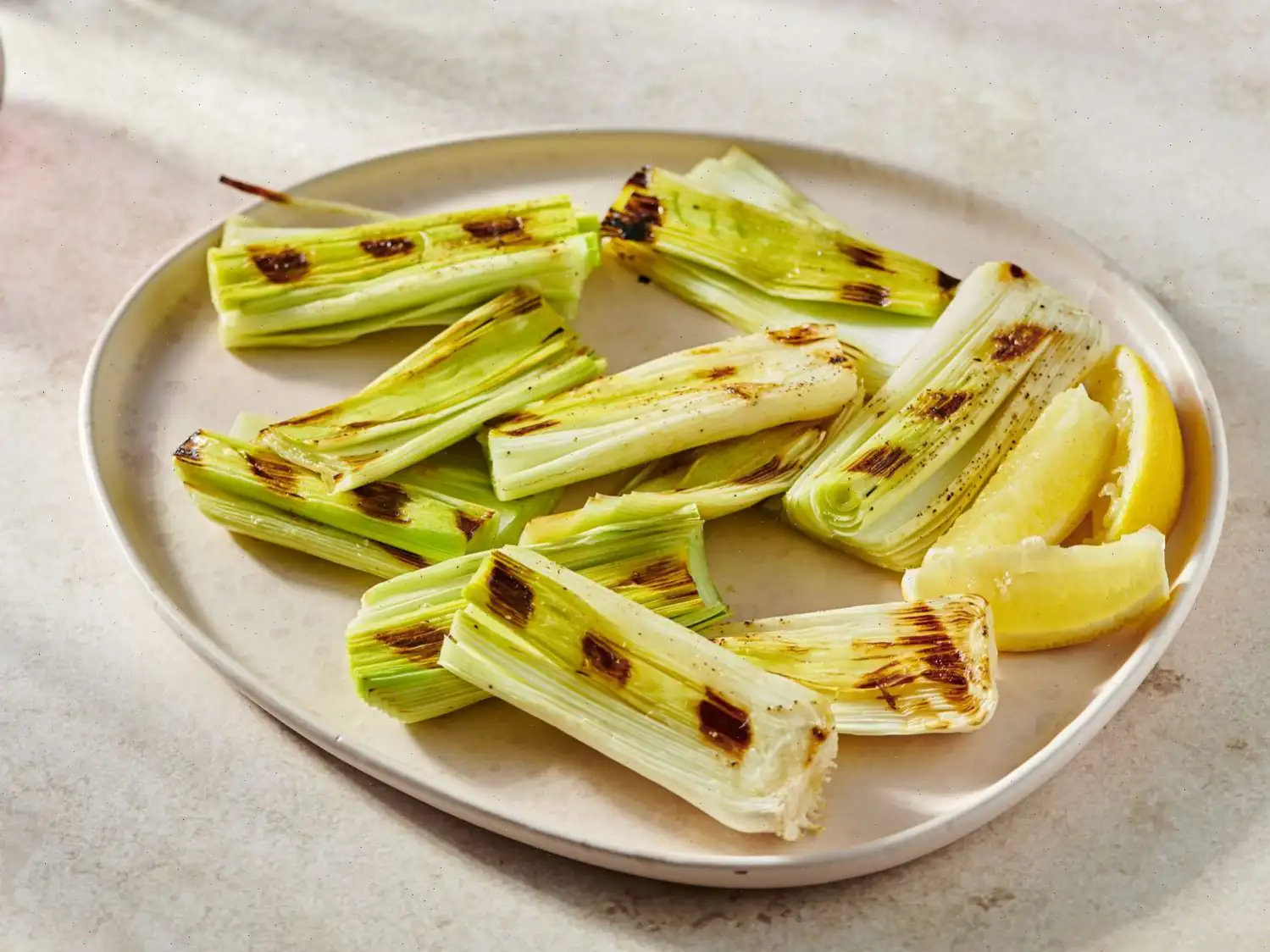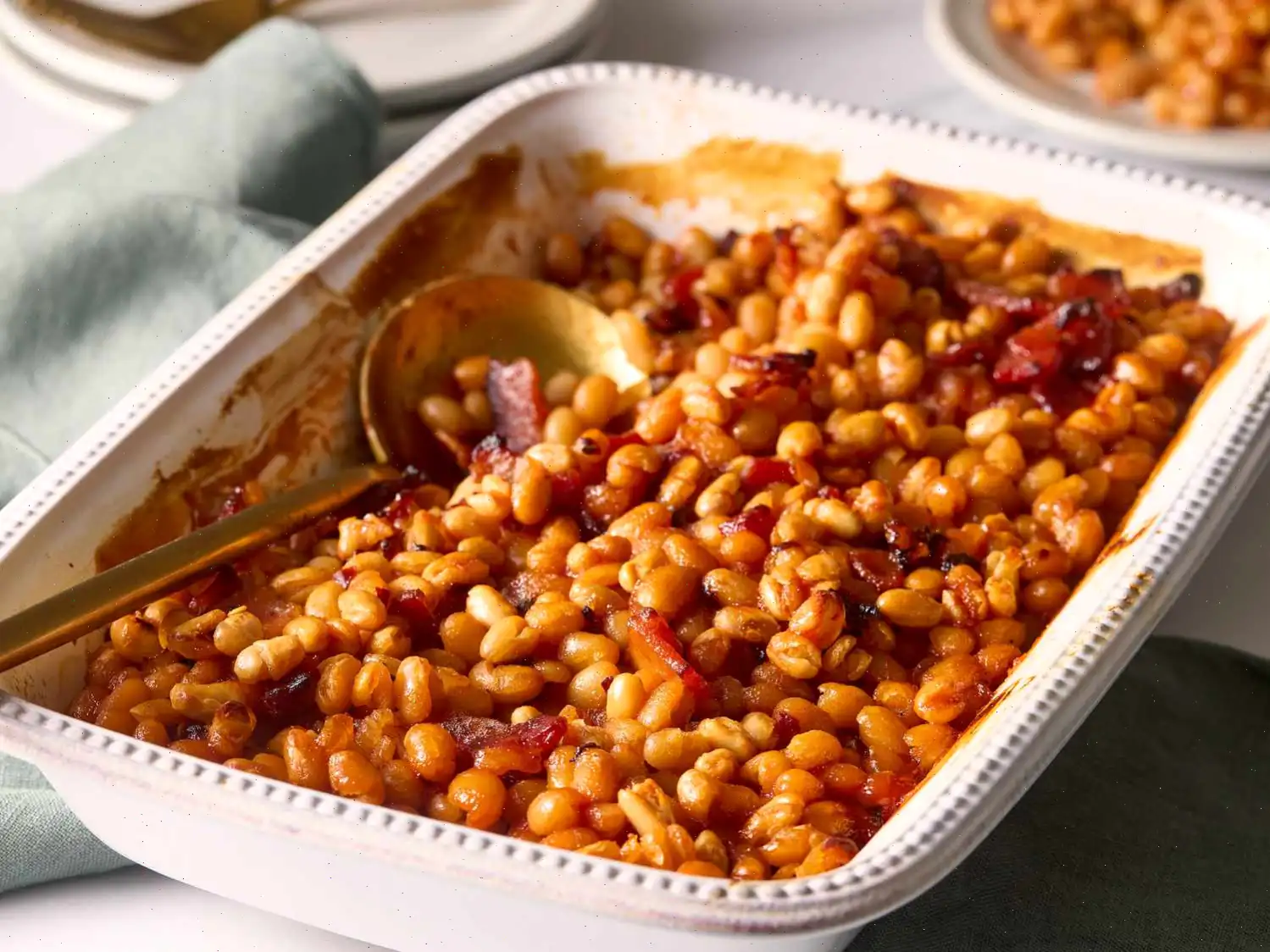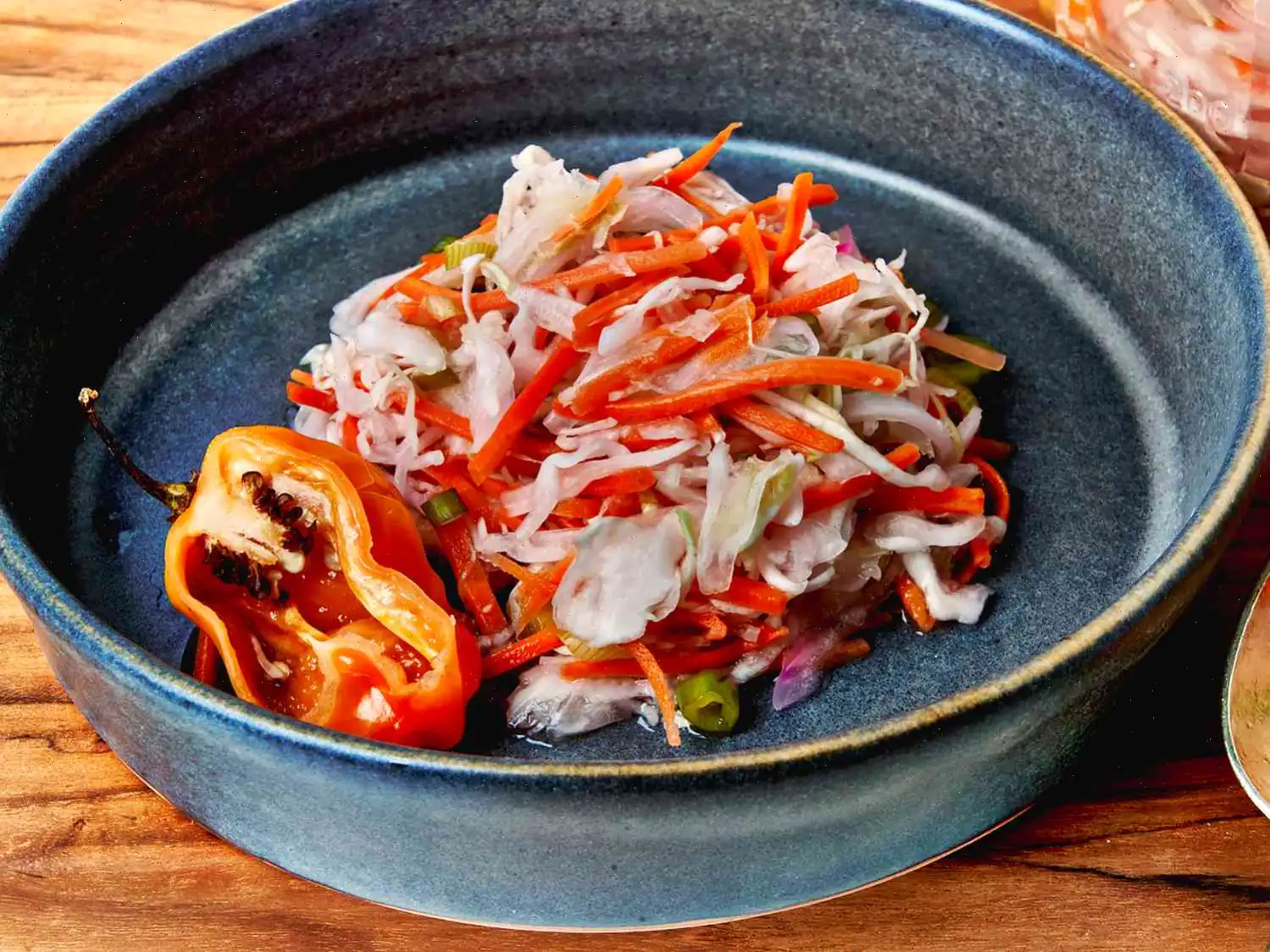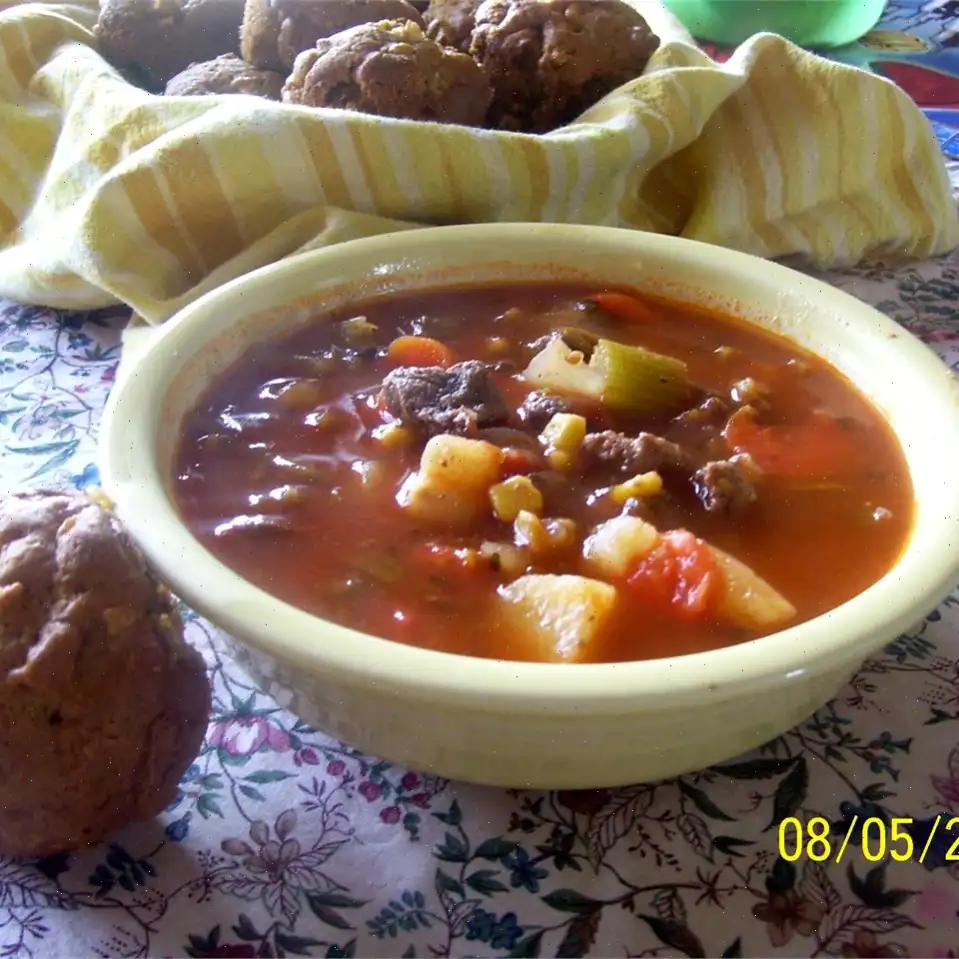
Pikliz Recipe
Ingredients
This recipe was developed with its original yield in mind. Ingredient amounts are automatically adjusted, but cooking times and steps remain the same. Please note that not all recipes scale perfectly.
- 2 cups shredded cabbage
- 1 cup shredded carrot
- 2 red or yellow bell peppers, thinly sliced
- 1/2 medium red onion, sliced
- 3 scallions, thinly sliced
- 1 Jamaican Scotch bonnet pepper
- 3 tablespoons whole allspice
- 4 peppercorns
- 2 cloves
- 1 bay leaf
- 1 1/2 cups white vinegar
- 2 tablespoons lime juice
Directions
- Stuff the cabbage, carrot, bell peppers, onion, scallions, Scotch bonnet pepper, allspice, peppercorns, cloves, and bay leaf into a mason jar. Fill the jar to the brim with the vegetables and spices.
- Pour in the white vinegar and lime juice. Press down firmly on the ingredients to make sure everything is submerged.
- Seal the jar with the lid and shake it once to mix the ingredients together.
- Place the jar in the refrigerator for at least 2 days to allow the flavors to meld together. The longer it sits, the better it will taste!
Cook's Note
Store the jar in a cool place for up to 2 months. Once opened, keep the jar in the refrigerator to preserve freshness.
Nutrition Facts (per serving)
| Nutrient | Amount | % Daily Value |
|---|---|---|
| Calories | 35 | |
| Total Fat | 0g | 0% |
| Saturated Fat | 0g | 0% |
| Cholesterol | 0mg | 0% |
| Sodium | 16mg | 1% |
| Total Carbohydrates | 7g | 3% |
| Dietary Fiber | 2g | 7% |
| Total Sugars | 2g | |
| Protein | 1g | 2% |
| Vitamin C | 37mg | 41% |
| Calcium | 44mg | 3% |
| Iron | 1mg | 3% |
| Potassium | 186mg | 4% |
Note: Percent daily values are based on a 2,000-calorie diet. Your daily values may vary depending on your individual calorie needs.

By Roscoe Hall
History of Pikliz
Pikliz is a traditional Haitian dish that has become a staple in Caribbean cuisine, particularly in Haiti. It is a pickled vegetable slaw made from cabbage, carrots, bell peppers, and Scotch bonnet peppers. The dish is usually served as a condiment to enhance the flavor of main courses, especially fried meats or grilled fish. The origins of Pikliz can be traced back to the Caribbeans colonial past, where pickling was a common method of preserving food. Over time, it evolved into a flavorful accompaniment to meals, and today it is a beloved part of Haitian culinary culture.
Regional Features
While Pikliz is primarily associated with Haiti, variations of this pickled slaw can be found throughout the Caribbean. The use of Scotch bonnet peppers, a key ingredient in Haitian Pikliz, is particularly popular in Jamaican and other Caribbean cuisines, known for their intense heat and unique flavor. In Haiti, Pikliz is commonly prepared and consumed in both rural and urban areas, often alongside the iconic dish of "griot" (fried pork) or "poul ak diri" (chicken with rice). The freshness of the ingredients and the intense spice from the Scotch bonnet peppers give the dish its signature kick, making it a perfect contrast to the rich, savory flavors of meat-based dishes.
Differences from Similar Dishes
Although Pikliz might seem similar to other pickled salads from around the world, it stands out in several ways. One key difference is its use of Scotch bonnet peppers, which give it an unmistakable heat and fruity undertone not found in other pickled slaws. In contrast, the popular American dish "cole slaw" is usually sweet and creamy, with mayonnaise and sugar as key ingredients. Pikliz, on the other hand, is tangy and spicy, with vinegar and lime juice providing acidity, and allspice and cloves contributing to its aromatic profile. The use of bay leaves and whole peppercorns further distinguishes Pikliz from more common slaws, giving it a unique depth of flavor.
Where It Is Usually Served
Pikliz is an essential side dish in Haitian cuisine and is typically served with grilled meats, fried fish, or stews. It is often paired with "griot," a popular dish made of fried pork, or "poul boucan," smoked chicken, adding a spicy, tangy contrast to the richness of the meat. While Pikliz is a staple in Haiti, it has gained popularity throughout the Caribbean and even in diaspora communities in the United States and Canada, where it accompanies a variety of Caribbean dishes. It's often found in restaurants that specialize in Haitian, Jamaican, or broader Caribbean fare.
Interesting Facts
- Pikliz is not only a condiment but also has a functional role in preserving vegetables, especially in warmer climates where refrigeration may not be readily available.
- The spicy Scotch bonnet peppers used in Pikliz are one of the hottest peppers in the world, making this slaw particularly fiery.
- In addition to its use as a condiment, Pikliz is sometimes incorporated into other dishes, like sandwiches, or served as an appetizer to stimulate the appetite.
- Pikliz is enjoyed across many Caribbean cultures, though each country has its own variation of the recipe, with some adding fruits like mango or pineapple for a sweet twist.








